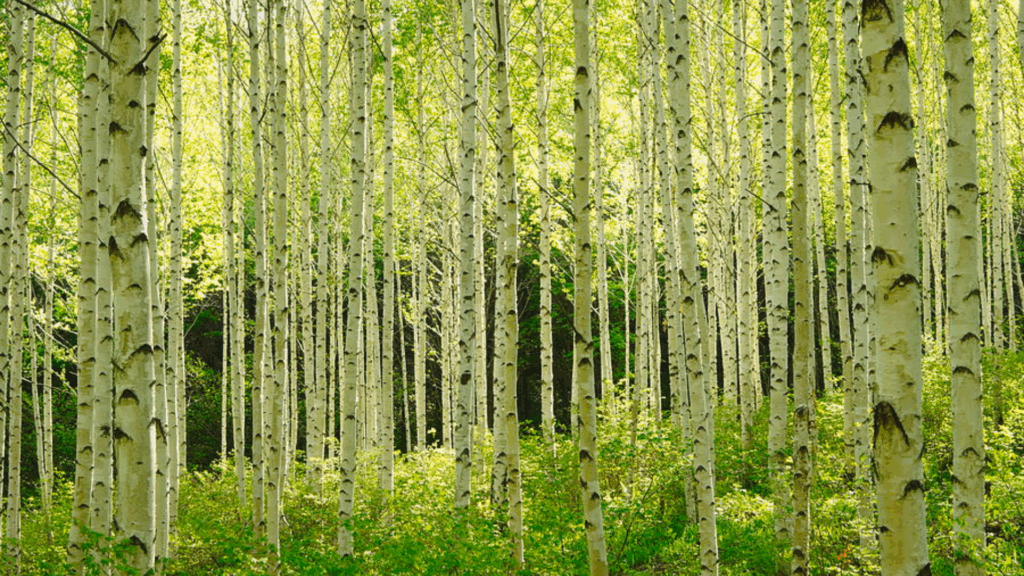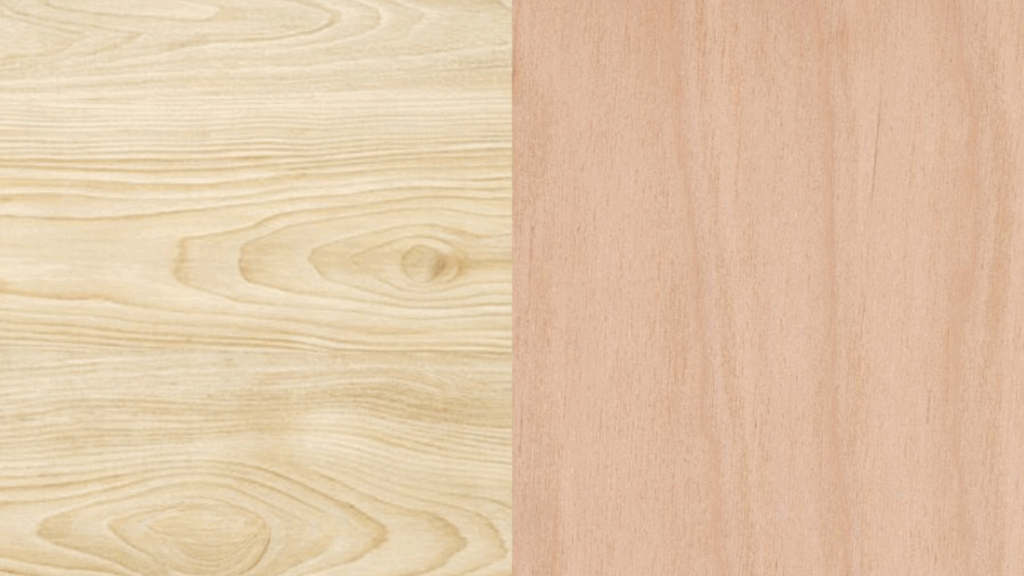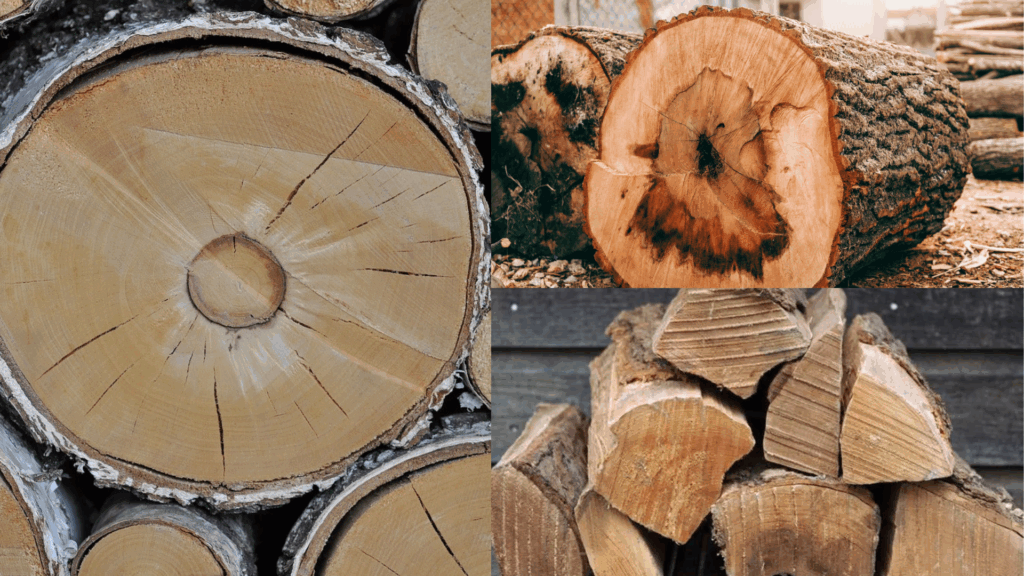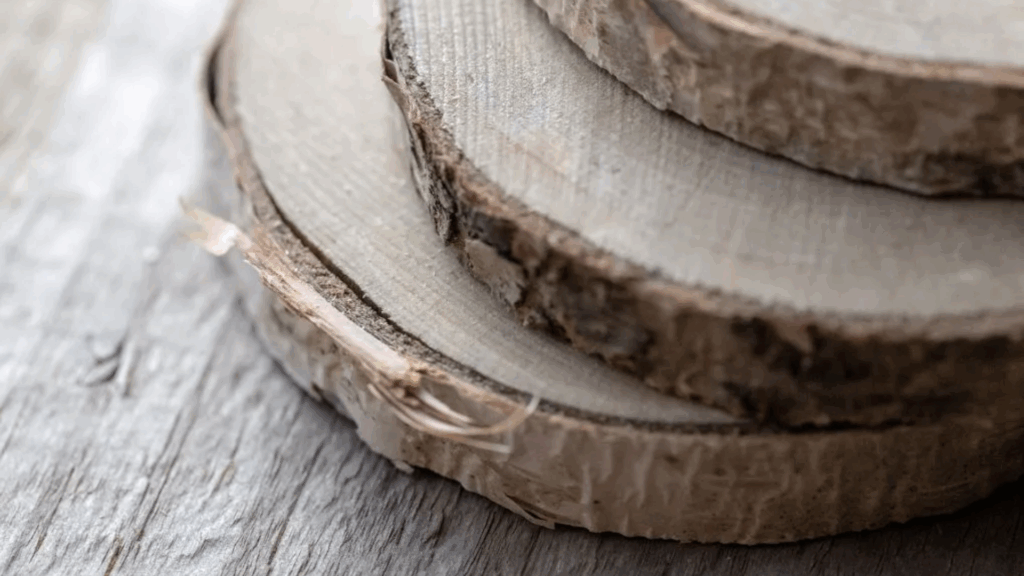I’ve spent time going through expert opinions, manufacturer specs, and real-life examples to answer a common question: Is birch wood really a hardwood?
Birch is often used in flooring, furniture, and cabinetry, but its characteristics can still cause confusion.
In this blog, I’ll explain what birch wood is, how it looks, how strong it is, and how it performs in everyday use.
I’ll also compare it to other popular hardwoods like oak and maple, so you can see how it measures up in color, grain, and durability.
If you’re planning a project and want a wood that’s strong, attractive, and easy to work with, understanding birch is a great place to start.
What Is Hardwood and Why Birch Qualifies?

Hardwood comes from deciduous trees, those that shed their leaves yearly, and is generally denser and more durable than softwood. Birch belongs to this group, coming from the Betula genus.
As a deciduous species, it’s officially classified as a hardwood, even though its hardness level varies by type.
Birch wood is known for its close, even grain and solid strength, making it useful for everything from cabinetry to flooring.
While it’s not the hardest hardwood available, birch offers a good balance of durability, workability, and cost. It resists wear better than many softwoods and holds up well in high-use areas.
The Janka hardness rating for yellow birch is about 1,260 lbf, which places it comfortably in the hardwood category. Birch may not be as tough as maple or hickory, but it definitely meets the standard for hardwood classification.
Key Birch Species in North America
Birch wood comes from several species, each with unique qualities. The most common types found in North America are:
- Yellow Birch (Betula alleghaniensis): Known for strength and fine grain, often used in furniture and flooring.
- White Birch (Betula papyrifera): Lighter in color and softer, commonly used for decorative panels or plywood.
- Paper Birch: Similar to white birch, it’s chosen for its lighter color and soft texture.
- Black Birch (Sweet Birch): Darker tone, prized for its hardness and rich color.
- River Birch: Popular in landscaping, also valued for its unique grain when processed.
Each species offers distinct color, density, and grain, providing various options for homeowners and builders.
Birch Wood Properties
Birch wood is known for its light color, fine grain, medium hardness, and reliable strength, making it a versatile choice for indoor projects.
1. Color and Visual Appeal
Birch wood ranges from pale cream to light reddish-brown, often developing a soft, golden patina as it ages. Its clean, light tone makes it popular for modern and minimalist designs.
Some species, like curly birch, feature unique ripple patterns that are highly valued for veneers and decorative projects, adding visual interest and a high-end look.
2. Grain and Texture Characteristics
Birch typically has a straight, even grain that gives furniture a clean, smooth finish. It sometimes displays wavy or curly patterns, especially in decorative species.
The texture is fine and consistent, making it easy to work with. It sands well, accepts finishes evenly, and is ideal for applications where a soft satin sheen or uniform appearance is desired.
3. Strength and Hardness
With a Janka rating around 1,260 lbf, birch falls in the mid-range of hardwood strength. It’s about as hard as oak and significantly more durable than most softwoods.
Birch resists denting and wear in daily use, making it a solid option for furniture, flooring, and cabinetry, though not as tough as maple or hickory in high-impact spaces.
4. Durability, Stability & Limitations
Birch is dense, strong, and handles shock and compression well, making it reliable for indoor use. However, it can shrink more than other hardwoods and may warp if not properly dried.
It performs best in controlled environments and isn’t suited for outdoor use, as it’s prone to moisture damage and decay when exposed to humidity.
Pros and Cons of Birch Wood
Birch wood offers great workability and a clean finish, but it requires careful drying and staining to avoid warping or uneven results.
| Pros | Cons |
|---|---|
| Easy to machine and work with | Can warp if not dried properly |
| Sand smoothly for a clean, polished finish | Tends to blotch when stained without a conditioner |
| Takes glue and adhesives very well | Not suitable for outdoor use due to moisture issues |
| Accepts finishes evenly with proper prep | Moderate shrinkage compared to other hardwoods |
| Affordable compared to many other hardwoods | Requires sealing to enhance and preserve appearance |
Birch vs. Softwoods: What’s the Difference?

| Feature | Softwoods (e.g., Pine, Cedar) | Birch (Hardwood) |
|---|---|---|
| Origin | Evergreen trees | Deciduous trees |
| Density | Lighter and less dense | Denser and stronger |
| Durability | Less durable, easier to dent and scratch | More durable with better wear resistance |
| Workability | Easier to cut, nail, and shape | Harder to work with, but offers a refined finish |
| Best Use | Good for less demanding projects, like low-traffic areas | Ideal for furniture, cabinets, and flooring |
| Staining | Easier to stain and finish | Prone to blotching without proper prep |
| Cost | More affordable, beginner-friendly | More expensive, better for long-term projects |
Summary: Softwoods are more affordable and easier to work with, making them great for beginners and simple projects. Birch, though trickier to handle, provides better durability and a polished look, making it perfect for high-end, long-lasting creations
Birch vs. Other Hardwoods

This comparison table highlights how birch stacks up against other popular hardwoods in terms of color, hardness, and common uses.
| Wood Type | Color | Janka Hardness (lbf) | Grain | Common Uses |
|---|---|---|---|---|
| Birch | Pale cream to reddish-brown | ~1,260 | Fine, straight | Furniture, cabinets, plywood, flooring |
| Oak | Light to medium brown | ~1,290 (red) / ~1,360 (white) | Open, pronounced | Flooring, furniture, trim |
| Maple | Pale to creamy white | ~1,450 | Tight, subtle | Cabinets, butcher blocks, and flooring |
| Walnut | Rich dark brown | ~1,010 | Straight with waves | High-end furniture, panels, and decorative |
| Hickory | Light to dark brown | ~1,820 | Varied, strong contrast | Flooring, tool handles, rustic furniture |
Understanding Janka Hardness
The Janka hardness test measures a wood’s resistance to denting and wear by pressing a steel ball into its surface.
Birch has a Janka rating of 1,260 lbf, making it harder than most softwoods and similar to red oak.
This strength makes birch ideal for flooring, furniture, and cabinetry, offering a good balance of durability and workability for residential and light commercial use.
Common Uses of Birch Wood
Birch wood is a popular choice for both structural and decorative projects thanks to its strength, smooth finish, and attractive appearance.
- Furniture: Birch is widely used in tables, chairs, and dressers due to its durability and fine grain.
- Cabinetry: Its smooth surface and ability to take finishes well make birch ideal for kitchen and bathroom cabinets.
- Flooring: Birch’s medium hardness and resistance to wear make it suitable for residential hardwood floors.
- Plywood: Birch plywood is known for its strength and stability, making it a top pick for cabinet interiors and drawer boxes.
- Millwork and Trim: Birch works well for baseboards, moldings, and other trim thanks to its clean lines and even finish.
Finishing Tips for Birch
These simple tips will help you get the best results when staining or sealing birch wood.
- Apply a Wood Conditioner First: Using a pre-stain conditioner helps prevent blotchy or uneven stain absorption on birch surfaces.
- Choose Gel Stains for Better Control: Gel-based stains sit on the surface and reduce the risk of splotches, giving a more uniform look.
- Sand Smooth Before Staining: Always sand birch thoroughly with fine-grit sandpaper to ensure the surface accepts stain evenly.
- Seal with Lacquer or Polyurethane: A clear topcoat like lacquer or polyurethane enhances birch’s natural color and adds long-lasting protection.
Conclusion
After looking into the facts, I can confidently say that birch is a true hardwood, strong, versatile, and visually appealing.
It has a clean, smooth grain that finishes beautifully and holds up well in furniture, cabinetry, and flooring.
While it’s not the hardest wood available, it offers a great balance of durability and workability.
Birch may need a little extra care when staining, but the results are worth it. If you’re working on a project that needs reliable performance and a natural, light-toned look, birch is definitely a smart option to consider.
Ready to start your project? I suggest picking up a few birch samples and testing finishes first. If you want help choosing the right type or prep method, feel free to ask. I’m happy to offer tips based on what you’re building.

